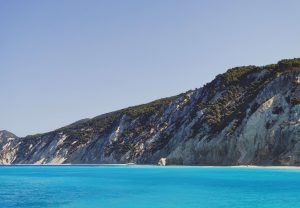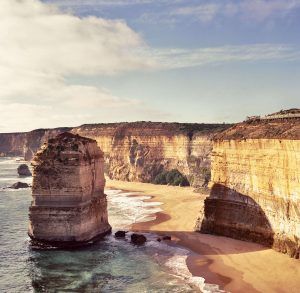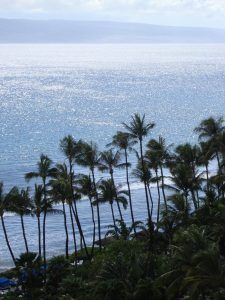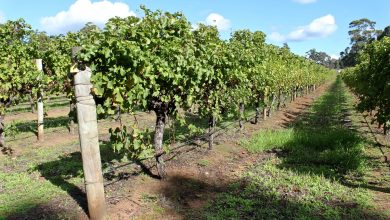Ocean Climate: [Characteristics, Flora, Fauna and Adaptability]

Important Points About Ocean Climate:
- What is? The oceanic climate is the one that is generated by the influence of the marine winds, being a variant of the temperate climate.
- Where it is located? This climate includes the area that is located between 35º and 60º latitude that obviously have an influence at the level of the oceans.
- What flora predominates? It is common to find species such as oaks, oak groves, chestnut trees, lime trees, ferns, beech trees, succulents, dragon trees, palm trees, among many others.
- What fauna predominates? Seawater and freshwater fish stand out as well. It is also possible to observe amphibians, mammals, reptiles, insects and birds of different species.
- How long is the day and night? During the winters, the duration of the nights is longer than during the summer. Similarly, in summer, the day tends to last up to 15 hours.
- Can human beings live in this climate? The oceanic climate is very pleasant for human life and for the species of flora and fauna characteristic of these areas.
 Where could oceanic weather be located if not right over the oceans? The influence of sea water makes this a very cool type of climate.
Where could oceanic weather be located if not right over the oceans? The influence of sea water makes this a very cool type of climate.
Oceanic weather is influenced by many factors including things like air masses and cyclones.
It has a series of very particular conditions that allow the arrival of spring and autumn to be established with great accuracy. And because it is a very interesting climate, we have dedicated time to preparing this post so that you can enjoy this reading, do you dare?
What is oceanic climate?
 The oceanic climate is the one that is generated by the influence of the marine winds, being a variant of the temperate climate.
The oceanic climate is the one that is generated by the influence of the marine winds, being a variant of the temperate climate.
It usually generates mild temperatures and a certain number of precipitations that occur throughout the year, with a slight increase during the winter.
The seasons are present, with cold winters and summers that are calm, with an average temperature of 20º C. The areas with an oceanic climate are usually rich in flora and fauna due to the existence of good conditions for their life.
Where is the oceanic climate located geographically?
This climate includes the area located between 35º and 60º latitude, which obviously has an influence at the level of the oceans. It can be found on all continents:
- European – Occupying the Northern Hemisphere, from Portugal to Norway.
- America: in Canada, Alaska and the United States (occupying in the latter case the Pacific coast). To the south, it includes Chile with its Pacific coast.
- Oceania: includes countries such as New Zealand and Tasmania.
Generally, it is located on the western side and also occupies a large number of small islands.
What characteristics does the oceanic climate have?
To delimit the oceanic climate from other types of climates, the following characteristics must be considered:
- Air masses: they are predominant and are divided into types depending on whether they come from cold, maritime or humid areas, with polar conditions. Westerly winds are common, and when they reach land they produce considerable precipitation.
- Temperatures: they are variable depending on the point of latitude in which it is located, but it is normal to find it around 10º C. This temperature changes depending on whether it is winter or summer, although the difference between one and another is not very wide. For the winter it can drop to 6° C, while in the summer it may rise to 20° C.
- Precipitations: they are common and frequent, distributed at all times of the year, being more frequent in winter than in summer. They can occupy an average of 1500 mm per year, a little more or less depending on the influencing factors.
- Seasons: there are 4 seasons, with mild winters and cool summers.
- Types: there are variations that are established based on the particularities of each area, finding subtypes such as the oceanic subpolar climate, oceanic subpolar with dry winters and Mediterranean oceanic that generates mild summers.
- Humidity: there is a constant relative humidity that is generated by the proximity to the sea and the presence of precipitation that is recorded throughout the year.
What flora predominates in the oceanic climate?
 The oceanic climate conditions make the areas where it develops very fertile, since the temperatures are cool and the rainfall is frequent.
The oceanic climate conditions make the areas where it develops very fertile, since the temperatures are cool and the rainfall is frequent.
This means that there are forests that, due to seasonal variations, tend to be deciduous. There are also montane forests and humid temperate forests.
In addition to forests, grasslands are a fundamental part of the vegetative activity of the oceanic climate. It is common to find species such as oaks, oak groves, chestnut trees, lime trees, ferns, beeches, succulents, dragon trees, palm trees, among many others.
What fauna predominates in the oceanic climate?
 Fauna species from all groups coexist in oceanic climates because their conditions are positive for animal life.
Fauna species from all groups coexist in oceanic climates because their conditions are positive for animal life.
Thanks to the fact that it is common for there to be rivers in its vicinity due to rainfall, seawater and freshwater fish stand out as well.
It is also possible to count amphibians, mammals, reptiles, insects and birds of different species. One of the most numerous and varied species of fauna are the butterflies that can be found in different colors, shapes and sizes.
The activities associated with raising livestock are very possible to carry out, making it easier to have sheep, cows, among others. This improves thanks to the frequent availability of fresh grass with which to feed them, due to the formation of meadows.
And since natural rainwater is not a problem, the land is very fertile and profitable farming is possible.
How long is the day and night in oceanic climate?
 The passing of the seasons directly influences the length of day and night in oceanic weather.
The passing of the seasons directly influences the length of day and night in oceanic weather.
From the beginning of the solstices, both summer and winter, a phenomenon of extension of each of these parts of the day is triggered.
Thus, during winters, the duration of the nights is greater than when it is in summer.
Likewise, in summer, the day tends to last up to 15 hours, leaving nights with only about 7 hours of darkness.
Can humans live in the ocean climate?
 The oceanic climate is very pleasant for human life and for the species of flora and fauna characteristic of these areas.
The oceanic climate is very pleasant for human life and for the species of flora and fauna characteristic of these areas.
Even the environmental conditions have turned many places into earthly paradises that are exploited for tourism.
For example, it is in the coastal areas of Portugal, in the Netherlands, on the coast of Norway, etc. All these spaces represent ideal places, both for daily life and to visit during a vacation.
The oceanic climate is decisive in the world because it is directly influenced by the largest masses of water that are the oceans. These bring with them their air masses that modify the characteristics of the environment, making them pleasant.
Bibliographic references
- Study of the daily concentration of precipitation in oceanic, Mediterranean and continental climate observatories in Europe, AP Agudo Gil, JC González-Hidalgo – zaguan.unizar.es
- Influence of the oceanic climate on the variability of fisheries: study of the Iberian platform of the Atlantic, ÁH Cabrero Rodríguez – 2021 – investigo.biblioteca.uvigo.es
- Oceanic climate: the Mexican seas in the face of global climate change, AG García – Climate change: a vision from Mexico – backend.planciudad.com
- Effects of oceanic climate on the life cycle and distribution of small pelagic fish in the California Current System, off Baja California, JA Valencia-Gasti, T Baumgartner, R Durazo – Marine Sciences, 2015 – scielo.org. mx
- Climate and vegetation , À Romo – 2000 – digital.csic.es
Maybe you are also interested in:
- Koppen climate classification: [Concept, Characteristics and Types of Climates]
- Alpine Climate: [Characteristics, Flora, Fauna and Adaptability]
- Arid Climate: [Characteristics, Flora, Fauna and Adaptability]
- Temperate Continental Climate: [Characteristics, Flora, Fauna and Adaptability]
- Continental Climate: [Characteristics, Flora, Fauna and Adaptability]
- High Mountain Climate: [Characteristics, Flora, Fauna and Adaptability]
- Climate of Argentina: [Characteristics, Flora, Fauna and Adaptability]
- Australia Climate: [Characteristics, Flora, Fauna and Adaptability]
- California Climate: [Characteristics, Flora, Fauna and Adaptability]
- Climate of Europe: [Characteristics, Flora, Fauna and Adaptability]
- Tundra Climate: [Characteristics, Flora, Fauna and Adaptability]
- Equatorial Climate: [Characteristics, Flora, Fauna and Adaptability]
- Cold Climate: [Characteristics, Flora, Fauna and Adaptability]
- Cold Weather: [Characteristics, Flora, Fauna and Adaptability]
- Mediterranean Climate: [Characteristics, Flora, Fauna and Adaptability]
- Polar Climate: [Characteristics, Flora, Fauna and Adaptability]
- Subpolar Climate: [Characteristics, Flora, Fauna and Adaptability]
- Subtropical Climate: [Characteristics, Flora, Fauna and Adaptability]
- Subhumid Temperate Climate: [Characteristics, Flora, Fauna and Adaptability]
- Temperate Climate: [Characteristics, Flora, Fauna and Adaptability]
- Humid Tropical Climate: [Characteristics, Flora, Fauna and Adaptability]
- Dry Tropical Climate: [Characteristics, Flora, Fauna and Adaptability]




